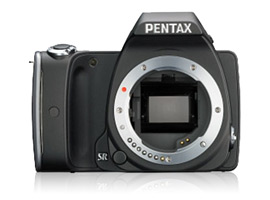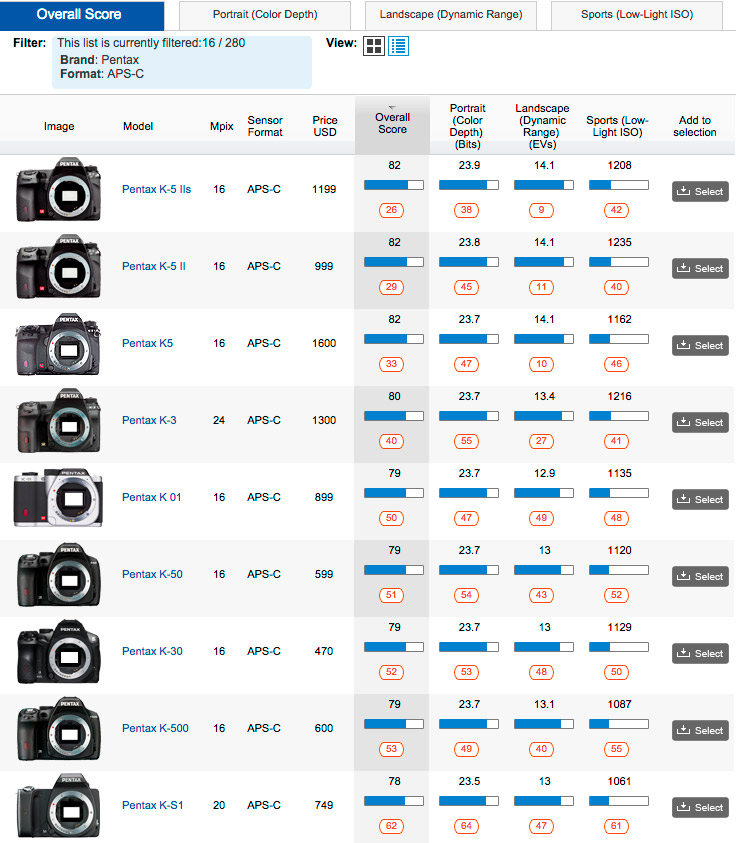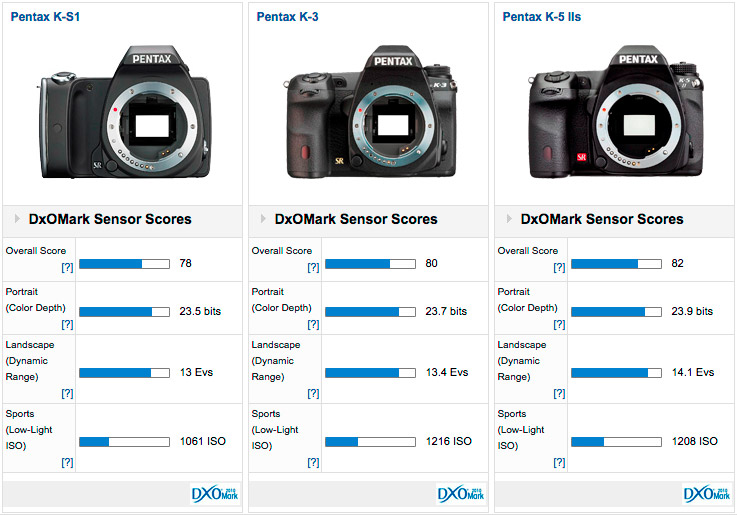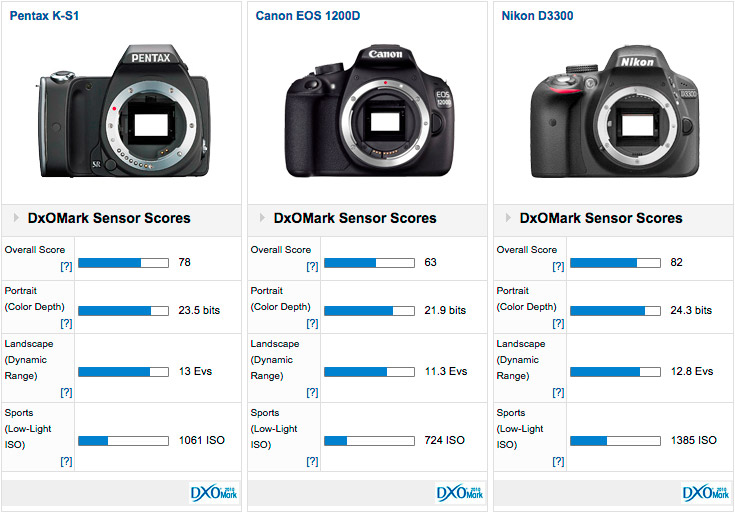Introduction
Pentax K-S1 Introduction: A compact design in 12 different colours
The first D-SLR to feature flashing LEDs on the handgrip, together with illuminated controls on the rear, the new K-S1 is Pentax’s latest entry-level offering. Targeted at consumers taking a step up to DSLR photography from a compact or bridge camera, the Pentax K-S1 features a small compact body design that’s available in 12 colours, including black, white or even orange. All designs feature the same green colour LEDs however, so there’s no colour co-ordination with the flashing lights unfortunately. What’s more as the K-S1’s kit lens is also only available in black, you could end up with a flashing, multi-coloured camera if you’re not careful!
With Pentax yet to break through with a full frame sensor the K-S1 is another option featuring an APS-C CMOS chip. It’s a newly developed sensor however, packing a 20.1Mp resolution that sandwiches it between the existing Pentax 24Mp K-3 and 16Mp K-5 IIs models. Like the K-3, the K-S1 sensor features Pentax’s innovative Anti Aliasing filter simulator, with 3 modes to control the amount of smoothing applied to images. It’s an interesting feature that makes the K-S1 a little more versatile, but is a little unnecessary on an entry-level DSLR and probably better suited to mid range models.
Unlike many Pentax DSLRs the K-S1 smaller body isn’t weather-sealed against the elements. It does feature Pentax’s in-camera ‘sensor shift’ Shake Reduction system however, which offers image stabilisation with almost all Pentax K-AF2 mount lenses. Priced $747 body only, or $797 including the standard 18-55mm kit lens, the K-S1 is slightly more expensive than entry-level offerings from the main Nikon and Canon competition and older Pentax DSLRs such as the K-5 IIs, too.
Pentax K-S1 Sensor Measurement: Slight regression for Pentax sensor score
With a DxOMark Sensor Score of 78 the Pentax K-S1 ranks 62nd for all sensors on the database and 30th for APS-C sensors. It also ranks in 9th for Pentax APS-C sensors behind older, lower resolution models such as the Pentax K-5 IIs, as well as higher resolution Pentax sensors like the K-3.
That said, the K-S1’s overall score of 78 places it only 6 points behind the class leading APS-C sensor in the Nikon D5200, which, with 84 points, offers 1/3rd stop better image quality overall.
In terms of the 3 sub-scores that feed into the overall score, the K-S1 performs marginally better for Dynamic Range with a measurement of 13Evs ranking in 26th place for all APS-C sensors tested. Pentax have historically scored well for Dynamic range, making them broadly a good APS-C option for landscape and photography in challenging light conditions. In fact the Pentax K-5 IIs remains the class leading APS-C sensor for Dynamic Range measurements, which, with a score of 14.1Evs, offers a 1 stop improvement over the K-S1 despite this being the strongest aspect of the new model. For Colour Depth the K-S1 score of 23.5 bits ranks 64th and a low-light ISO measurement of 1061 ranks the K-S1 in 61st place, both of which are in line with its overall performance.
Pentax K-S1 vs K-3 vs K-5 IIs: Different resolutions, similar Sensor Scores
If we compare the new K-S1 scores to other Pentax DSLR models we can see that overall image quality is broadly the same, with the highest scoring 24Mp K-5 IIs just 4 points and a 1/3rd of a stop better image quality than the K-S1 overall.
Now available at discounted prices around $697 the K-5 IIs is a little cheaper than the K-S1 however and offers a broadly similar feature set. The main difference is the K-5 IIs lower resolution 16.4Mp sensor, but despite that it still boasts the best Pentax Sensor Scores in almost all categories, bar ISO where it’s only just nudged out by the K-3.
The K-3 packs an extra 4Mp of resolution over the 20.1Mp K-S1 of course and achieves marginally better scores in all sub categories compared to the newer model. What’s more with its weather-sealed body and faster frame rate the K-3 does have more to offer than the K-S1, but it’s significantly more expensive at $1,347, compared to $797 for the K-S1.
Pentax K-S1 vs Canon EOS 1200D vs Nikon D3300: Tough entry-level competition from Nikon
So how does the new K-S1 compare to entry-level options from the big Nikon and Canon competition? Well, with its body only price tag of $747 the K-S1 is currently more expensive than the $547 Nikon D3300 and $699 Canon EOS 1200D, both of which have been on the market longer. In terms of features the K-S1’s Anti -Aliasing filter simulator is unique and the Pentax also offers a broader ISO range, built-in sensor shift and a faster 1/6000th maximum shutter speed. The D3300 boasts the highest resolution at 24Mp however and the best DxOMark Sensor Scores to boot.
With a DxOMark Sensor Score of 82 the Nikon D3300 offers a 1/3rd of a stop better overall image quality than the K-S1 with 78 points. There’s nothing between them for Dynamic Range, with scores of 13 Evs compared to 12.8 Evs. The D3300 does offer 1/3rd of a stop better Colour Depth, scoring 24.3 bits compared to 23.5 bits for the K-S1 and ISO is also a strong point for the Nikon D3300 with its score of 1385 ISO leading the way for APS-C sensors. That equates to around 1/3rd of a stop better ISO performance compared to the K-S1 with a score of 1061 ISO, which is a great result considering the D3300’s features a higher resolution 24Mp sensor.
The K-S1 fares better against Canon’s 1200D entry-level DSLR however. With its overall score of 78 compared to 63 for the Canon we can say that the K-S1 offers 1 stop better image quality than EOS 1200D. As we’ve seen Dynamic Range is often a strong point for Pentax and against the 1200D the K-S1 offers almost 2 stops better performance with scores of 13 Evs vs 11.3 Evs. The difference isn’t as dramatic for Colour Depth and ISO but again the K-S1 comes out favourably in both categories offering around 1 stop better colour and ½ a stop improved ISO performance over the EOS 1200D.











DXOMARK encourages its readers to share comments on the articles. To read or post comments, Disqus cookies are required. Change your Cookies Preferences and read more about our Comment Policy.